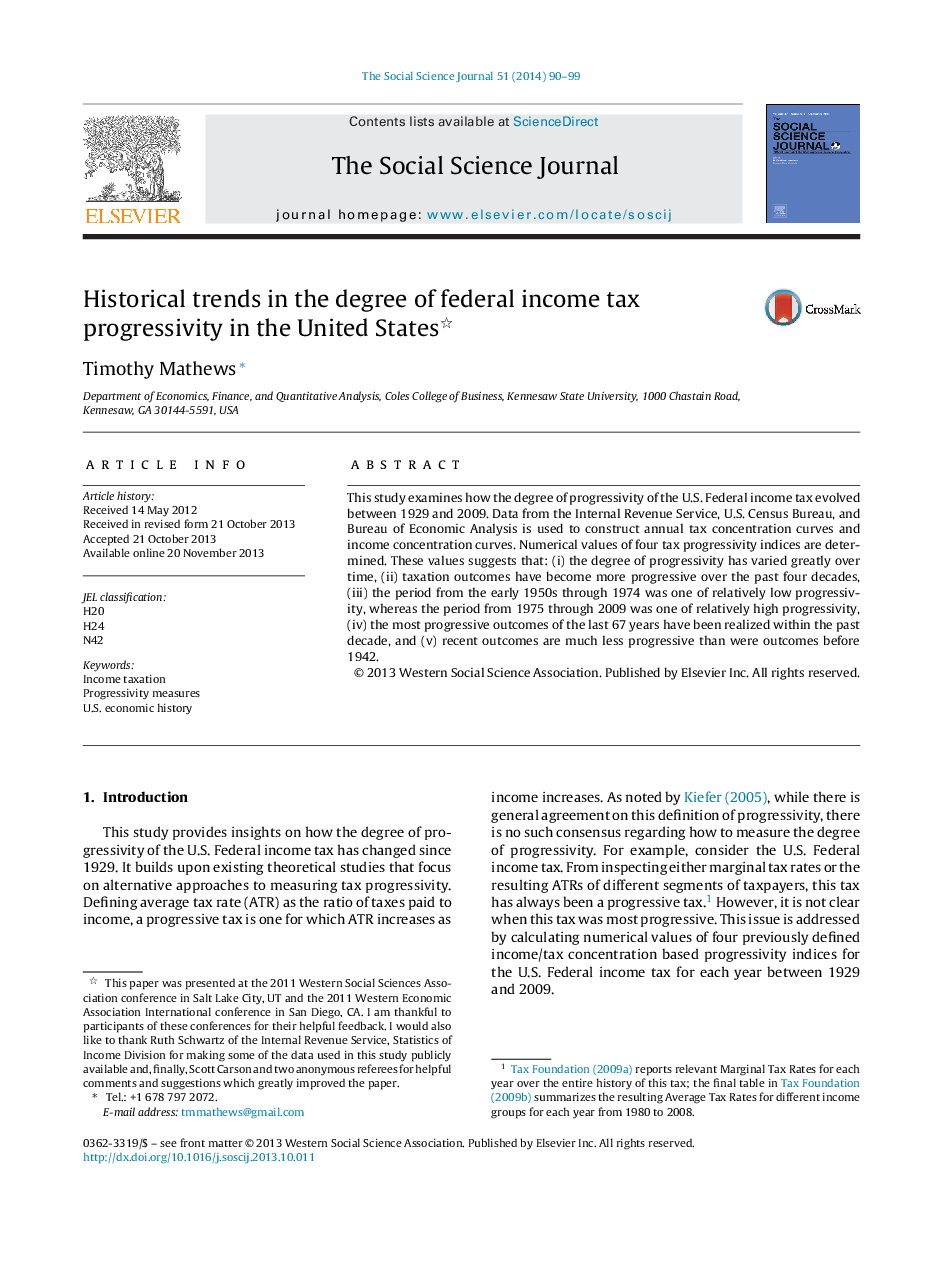| کد مقاله | کد نشریه | سال انتشار | مقاله انگلیسی | نسخه تمام متن |
|---|---|---|---|---|
| 140182 | 162671 | 2014 | 10 صفحه PDF | دانلود رایگان |
• The progressivity of the U.S. Federal Income Tax is measured from 1929 to 2009.
• The degree of progressivity of this tax has varied greatly over time.
• Taxation outcomes have become more progressive over the past four decades.
• The most progressive outcomes of the last 67 years occurred in the most recent decade.
• Recent outcomes are much less progressive than were outcomes before 1942.
This study examines how the degree of progressivity of the U.S. Federal income tax evolved between 1929 and 2009. Data from the Internal Revenue Service, U.S. Census Bureau, and Bureau of Economic Analysis is used to construct annual tax concentration curves and income concentration curves. Numerical values of four tax progressivity indices are determined. These values suggests that: (i) the degree of progressivity has varied greatly over time, (ii) taxation outcomes have become more progressive over the past four decades, (iii) the period from the early 1950s through 1974 was one of relatively low progressivity, whereas the period from 1975 through 2009 was one of relatively high progressivity, (iv) the most progressive outcomes of the last 67 years have been realized within the past decade, and (v) recent outcomes are much less progressive than were outcomes before 1942.
Journal: The Social Science Journal - Volume 51, Issue 1, March 2014, Pages 90–99
